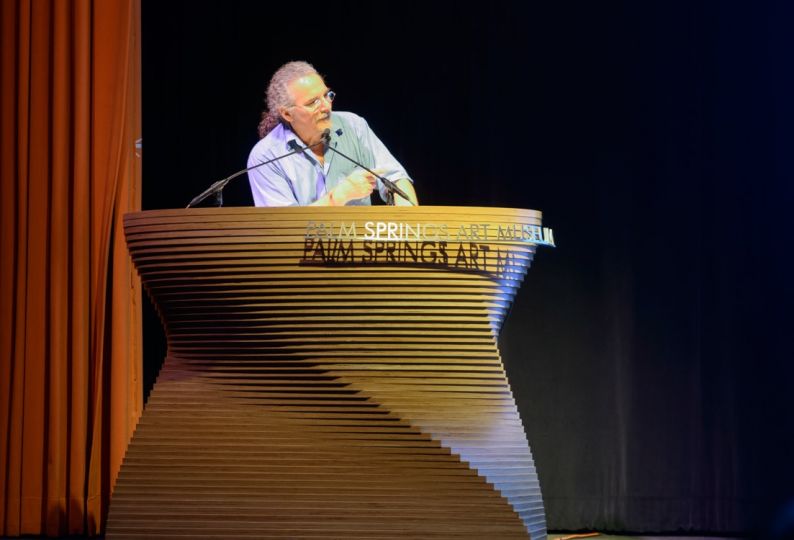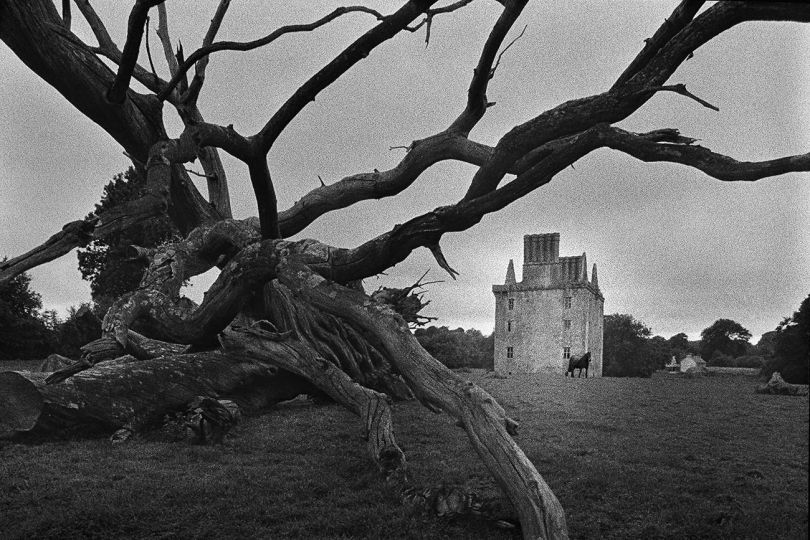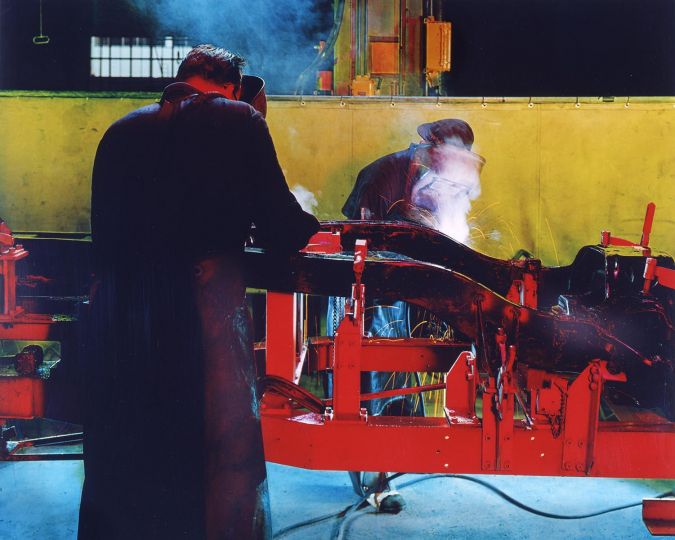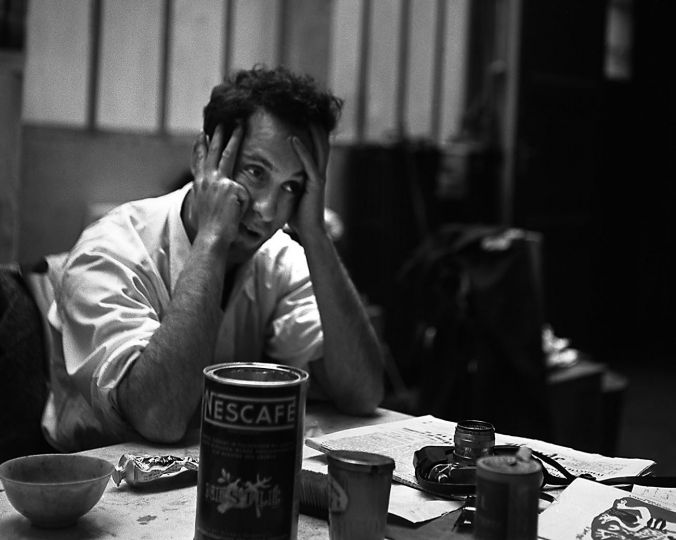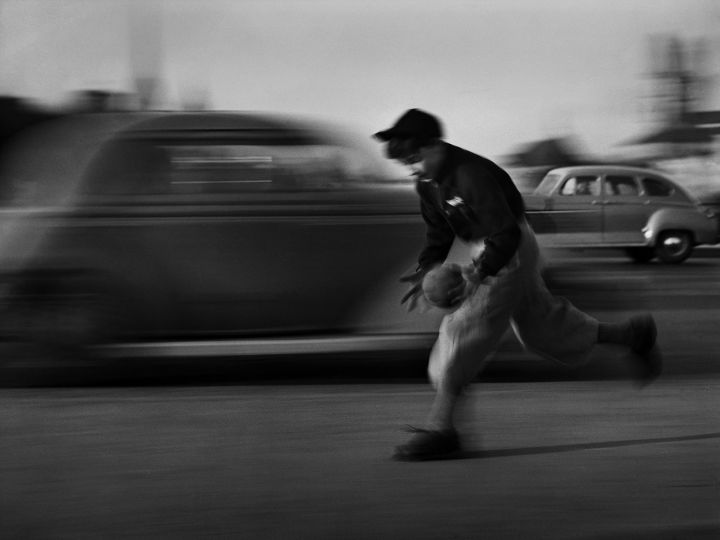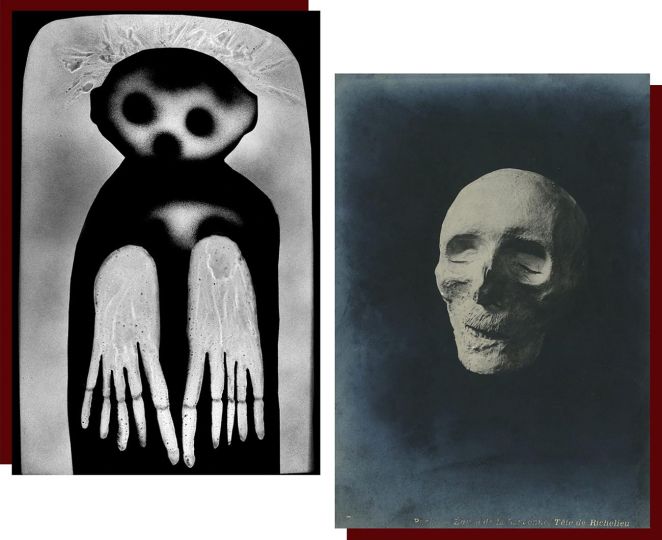Nazraeli has published over 400 titles in the 25 years Chris Pichler has been exercising his vision for photo books. Jeff Dunas sat down with the maverick and tried to figure out what makes his publishing house so different from the others.
Growing up in Lawrence, Kansas, the future maverick art book publisher Chris Pichler had a guardian angel named Nazraeli. By the time he was 18 years old, he knew he had but one goal, one overriding interest, one passion: Publish photography books. Later, armed with a degree in fine art and a desire to live in Europe, Pichler arrived in Germany where he got a job packing lamps in a warehouse by day, and putting together books by night. On occasions when he had only enough money to print a book, he’d hand-bind them himself.
Nazraeli has published over 400 titles in the 25 years Chris has been exercising his vision for photo books. He doesn’t seem to realize that in fact, he’s been setting them throughout his career. He’s not keen to visit galleries and while he recognizes the value of beautiful prints, he’s not out to replicate that quality in the Nazraeli books he publishes. His vision involves unpretentious books, – where the content rules. He’s been fortunate in that his vision appeals to book and photography collectors throughout the world, and he’s been able to carve out a niche in a business littered with short-lived publishing companies that were unable to find a way to financially survive. One of the primary reasons for so many defeats is inherent in the way books have been marketed and sold. Rather than rely on 35% total sales through wholesalers and retailers who together retain at least 50% of the retail price of a book, and have the luxury of returning as many as they care to for full credit, Pichler has a list of loyal collectors and enthusiasts who buy directly from the company, allowing him to take risks on books that any book publishing company sales team would never understand and instantly reject. Playing it safe is not in Chris Pichler’s vocabulary and we photo book collectors are all the better for it. Chris can print as few as 500 copies and make a profit where the normal publishing model requires publishers to print 3,500 – 5,000 minimally. It’s a high-stakes game and Pichler is one of a precious few mavericks at the table who consistently surprises and amuses us with off-beat but marvelous books, chosen by the gut feeling and experience of one man alone, laid-out and designed by himself or in collaboration with the artist.
For years we thought Nazraeli was a German company when all the sudden it turned up in Tucson, Arizona. No press releases, no publicity machine – in fact, no press nor publicity department at all! No sales force, no editorial offices, no committees to decide anything, no tedious discussions about the direction to take with each book, no deep discounts, no remainders, practically no staff. And despite this, all the other publishers and would-be publishers in the game look at Nazraeli, scratch their heads and go away more confused than ever when they try to understand its business model. The answers to these questions lie in the person of Chris Pichler alone. He knows what he likes, what he wants and how to live his life. Is he a recluse? Probably not – but he’s quiet (most of the time!) understated, has a wicked sense of humor, enjoys immensely what he does and understands above all what he doesn’t want. He doesn’t want a big company with lots of employees. He doesn’t want offices in some big city downtown. He doesn’t compete with anyone and isn’t interested in following anyone’s path but his own. He understands how to live.
Based in a magnificent house in a quiet suburb of Portland, Oregon, where he lives with his lovely wife, Maya, he appreciates the Japanese esthetic and has recently fallen madly in love with Spanish Revival architecture. A wine & food enthusiast, he spends his time between Portland, Tokyo and his new love, the California Central Coast wine region, Paso Robles, where he recently rebuilt an unassuming house on top of a hill with a commanding view over hundreds of miles of rural California. Next came the cows and the olive orchards. His wife’s latest birthday present was a lovely heffer named Chi-Chan. That’s what you give a woman who has everything. He recently began to understand that in the same way he has been able to trust his instincts putting photographs on the printed page, he can also trust his gut feelings about putting a property on a piece of land. If he can imagine it, he can do it. His recently remodeled house in Paso is beautifully appointed, understated, well-thought out and is his secret garden of over 20 acres, smack in the middle of the old cowboy country he dreamt about back when he and his friend Nazraeli lived in Kansas.
Jeff Dunas: How do you select books for Nazraeli?
Chris Pichler: I don’t look at work with a pre-conceived agenda. I’m not looking for a certain kind of work. If you look at the books we’ve published over the years or even over the last six months, it’s very diverse: Michael Kenna’s landscapes or Todd Hido’s landscapes and portraits, Pulp Art Book, Daido Moriyama, Richard Misrach: It’s all over the board. I just need to feel that something’s authentic and that it has something to do with my interests at that time. For example: I was never interested in houses or anything domestic really, until 12 years ago when my wife and I moved from an apartment in the East Bay to a house in Portland. Without even thinking about it really, I just happened to publish John Divola’s Isolated Houses, that we published as we were moving and which is one of my all-time favorite titles, and Todd Hido’s book, House Hunting. I don’t know if that’s a total coincidence or if looking at these pictures prodded us in the direction of actually wanting to have a house…? Maybe actually looking for a house opened me to work that was somehow related to that? It’s basically chance, or coincidence, and I absolutely depend on chance in everything.
JD: So, how does the work you publish filter up to you? Friends of Friends?
CP: That’s fairly common. It’s pretty small, the photography book publishing world. If I publish someone’s work and they know someone else that I might already know about, for example, that’s one way we get connected. Nazraeli get asked on a daily basis what its submission policy is and we have to say that we don’t accept unsolicited proposals. The one time each year that I look at work is at the Palm Springs Photo Festival.
JD: Thank you…. !
CP: It’s true. I adore the Palm Springs Photo Festival. That’s no secret. It’s a great forum for seeing work because I’m there, enjoying good friends and good weather in April. I’m there as a reviewer. I have maybe 100 appointments over that week. The people that come there to show work are there specifically for that purpose. I actually really enjoy that experience because there’s no pressure on me. I feel pressure if I go out to dinner after a friend’s opening, for example, and someone at the table starts proposing their book project to me. That’s the wrong time. At the Palm Springs Photo Festival, I’m there to review work. I tell each person right at the beginning that I’m not here to find books to publish. This isn’t a scouting trip for me. That being said, when I look at photographs, I tend to see them through the lens of a book publisher. I may see a body of work that I think is incredible – very moving, but I can’t picture how it could be a book. On the other hand, I might see photographs at an exhibition, that don’t resonate with me, but in a certain format and on certain kind of paper, I feel they would make a very powerful book. I look at work with these kinds of things in mind because that’s just who I am. That takes the pressure off. I can tell someone, “I really love your work. I love it for these reasons… “ – without saying I’m going to publish it. And, still, I’ve seen five or six projects at the Palm Springs Photo Festival that I ended up publishing.
JD: What role does your wife, Maya, play at Nazraeli?
CP: Maya is one of the brightest people I’ve ever met and a very good objective thinker. In our personal lives or in business, she’s someone I can always talk to about an opportunity or an issue, and she’s a very good sounding-board. In her own profession, she’s an expert on Japanese photography. She’s also a director of a design firm in Tokyo for which she acts as a connection between clients including galleries, for example, and artists in Japan, the US or Europe.
JD: How can Nazraeli be profitable printing so few copies of each title when other publishers need to print thousands to try to keep costs down?
CP: We are not interested in seeing how many bookstores we can get our books into. We’re happy to have two, three great books stores in each major city that can sell lots of our books as opposed to lots of booksellers selling a few copies of each title. I would guess we sell 25% of our books directly which translates into 50% of our revenue. This is very unusual in publishing! I don’t publish a book just because I think I can sell a lot of copies. I am happy to publish a book if I can sell very few copies as long as it’s somewhat profitable. We have a very broad base; individual customers, institutions all over the U.S. and in many other countries as well who would rather call us on the phone and talk about our new books, then buy from us rather than buy on Amazon. This way we have a direct connection with many, many people who share similar interests with us.
JD: By not following trends, you’ve ended up setting a number of them.
CP: When someone sells a dog book and sells a zillion copies, lots of others will publish dog books. When those don’t sell, it’s a bad feeling. When we publish a book and it doesn’t sell well, it’s not a bad feeling. It’s still a book that I believe in and it will still find its audience at some point. I’m not interested in chasing moving targets.
JD: Let’s talk about your book design philosophy. Nazraeli books have a distinctive look about them, simple, unpretentious. There’s an esthetic about your books. By stripping everything away, paring things down, and being consistent in that regard, Nazraeli books have become distinctive and widely imitated. You don’t let designers get loud and out of hand. Nazraeli books don’t look like Fabian Baron designed them. The designers need to get out of the way.
CP: Everything is designed. Your shirt is designed. Your tape recorder is designed. When it comes to photographic books, ink on paper, representing a photograph, is so beautiful to my eyes, I don’t want to throw things on the paper that are going to compete with that. That doesn’t mean that the book should be like a portfolio. It has to have some feeling, some emotion or some sense to us but that comes through by really small decisions like paper, texture and the format, binding, and first and foremost, the work itself. People understand the subtle things we do that add to the emotional response, without disturbing the experience.
JD: Who were your influences at the beginning?
CP: Herb Alpert was a major influence!! Really…! Jack Woody at Twelvetrees influenced me a great deal. When I saw what Jack’s company was doing while I was in college, it took that old desire of mine of publishing books and brought it into focus. It showed me there is a way for a human being to select work, words, stories, or even sheet music for that matter, and put them together into a package, have them printed and bound, that you could sell without needing a huge staff and loads of money to do it. I think Jack Woody did pave the way and I always give him credit for that.
JD: Earlier in your life – what was the pivotal moment that led you to want to publish books?
CP: When I was in the eighth grade, my family moved to Hutchinson, Kansas. When I was a kid vaguely interested in art and music, very interested in girls and hanging out… I wasn’t really very ambitious. My father traveled a lot on business and had the wisdom to take me with him on trips, thinking it was more enlightening for me to see new places, far away from what I was used to, than to spend another Wednesday or Thursday in my high school in Kansas. One time he took me on a trip to Phoenix, Arizona and since I’ve always loved hot weather, it was great. While he was in meetings, I wandered around the Arizona State University campus, realizing in about a minute that this was where I was going to attend college! While I was wandering around the campus, I went into a little building where there was an exhibition of photographs, mostly collages, by Jack Stuler which just completely overwhelmed me. At that moment I decided I’d study photography and that Jack was gong to be one of my teachers. In my junior year at Arizona State, I attended Salzburg College in Austria. It was my first time in Europe and I loved it. They had a very strong photography program there. During that year I was encouraged to travel a lot, which I did. I spent time in Germany, Italy and Greece. After graduating Arizona State, I got a job washing dishes in a restaurant and saved up enough money to get back to Greece. By this time I knew I wanted to be a publisher but didn’t want to continue to graduate school, so with my bachelors of Fine Arts Degree, as I was in no condition to move to New York and start knocking on publisher’s doors, (I had no idea really what publishing entailed), I wanted to go somewhere far away, where it was warm, and since I liked Greece, I moved to Athens. I ended up in Munich several months later, stayed at a friend’s house in the country and eventually I began publishing, first, photo postcards and then eventually books, having formed a German company. I contacted Jack Stuler and told him I really wanted to publish a book of his work. That was the first book I ever published. It took me forever.
JD: How many titles do you currently publish a year?
CP: Now, about 30 titles a year. We really don’t care about seasons. It’s not that difficult. In two of our series, the One Picture books has 8 per year [a collection of small format books that each contain a signed print] and the Six by Six series is either 6 or 12 books a year. That’s already 20 books.
JD: Describe the Six by Six series.
CP: About four or five years ago, when banks started collapsing, like every business owner, I had to think “what should I be doing? How should I be reacting to this economy?” I took a lot of walks at night thinking about…. should I publish inexpensive recession books and sell them for $10 or should I do the opposite and just circle the wagons and aim for the bulls eye? Pull the stops out: So over six months, I developed the idea for this series. There would be 36 titles, work from very celebrated artists. The somewhat flexible rules dictated that the photographer’s work had to be in certain collections, have strong track records and collector bases. We publish 100 numbered and signed copies of each book in the series. Each contains a signed, original print. They are for people who are very serious about collecting who would agree to buy 36 books over the next 3 years for a total of $18000.
JD: So you picked the core of the depression to come up with the most expensive book project in history.
CP: The economic crises really was the impetus for it. Initially the price was $500 per book. Currently the set is selling for $36,000 and it’s nearly sold out. These are people or institutions that I have had long-term relationships with. They took a leap of faith. It’s a great value but it’s a lot of money too. I’m moved that certain individuals or institutions trusted us enough to say, “We will do this.”
JD: What’s it like being Chris Pichler?
CP: It’s fun because I know so many great people that I enjoy spending time with. There are so many interesting places to visit, and things to do. I think it’s great to be anybody who is fortunate to have interests that occupy them and good friends they can hang out with.
JD: Congratulations Chris – you have built a great list, a great reputation and a great, pioneering photo-book company that has done a lot to make the names of a lot of photographers. See you in Paso..!
Interview made in Santa Monica, California, January 17, 2013 by Jeff Dunas


